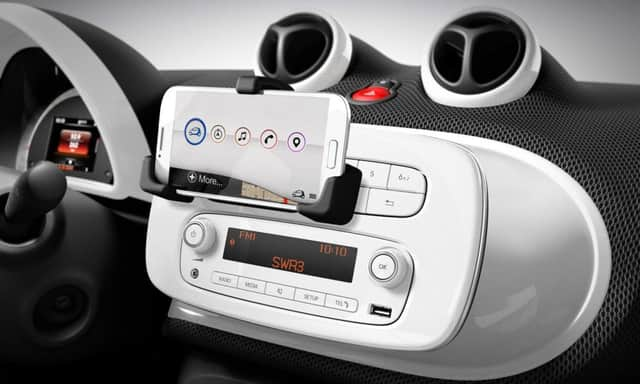Connected cars that are less smart than your phone


But the technology that has found its way on to the dashboards of even modest family saloons in recent years begs a whole new kind of question, and it’s one that many sales people haven’t a clue how to answer.
Whenever you introduce a new motor to your driveway, one of the first things you will want to do is connect the audio system to your phone. If the car is a recent one, it should have at the very least an auxiliary socket and a USB port, with Bluetooth, Android Auto and Apple CarPlay further up the range.
Advertisement
Hide AdAdvertisement
Hide AdBut there is no uniformity as to what manufacturers provide, even within the same series of models. A lot of the bells and whistles are sold as optional extras, with the result that hardly any two cars are alike.
It was ever thus. In the early 1980s, BMW wanted to charge me so much to fit a push-button radio that I told the garage I didn’t want one. They made me pay instead for the piece of plastic that went over the hole it left.
Today, the options are infinitely more complex, and the specifications prone to change too fast for the big car makers to keep up with.
The Apple and Android badges are currently the gold standard, allowing your dashboard unit to display all the navigation, music and communication apps you have installed on your handset. But there are a dozen or more proprietary systems, and their real-world functionality doesn’t always match the description in the brochure.
Advertisement
Hide AdAdvertisement
Hide AdThere is, for instance, no guarantee that a USB socket next to the ashtray will communicate with your phone in any way other than to charge it. If it carries an iPhone badge, it very likely won’t work with an Android device, and vice versa.
Car with built-in sat navs, which rely on your phone for traffic updates will almost certainly make a worse job of it than your phone by itself. And audio systems with built in online services will do no more than the equivalent apps on your handset.
That’s why it pays to test drive the audio system of a car as well as the vehicle itself. Take a USB cable with you, plug your phone in and see if it works. Turn on the sat nav and check if the mapping is as good as your standalone unit. Unless it says Tom-Tom when you turn it on, it probably isn’t.
It begs the question, why have a car stereo at all, especially since they don’t even play CDs any more. All the music you are likely to want to hear, including the output of digital radio stations, is already on your phone.
Advertisement
Hide AdAdvertisement
Hide AdA few marques have made the handset itself part of the dashboard. Smart, whose cars are only slightly bigger than some phones, provide a cradle that you can plug into a concealed socket in the radio. This contains most of the wiring you need, so all you need to do when you get in is connect a short lead to your phone and put it into driving mode. Hundreds of third-party phone holders are available for other cars, but none is as integrated as this.
Of course, using your phone for music means consuming mobile data, and if you are on a monthly quota, this will be a consideration. But Google Maps, which is far more up-to-date than any built-in navigation unit, is relatively frugal, especially if you download the mapping you need on wi-fi, before you leave home. It’s smart technology for those cars that aren’t as smart as you thought.